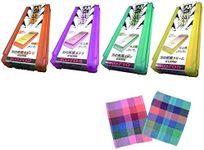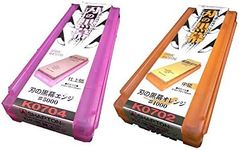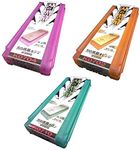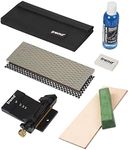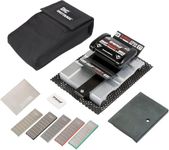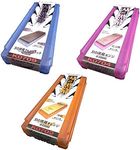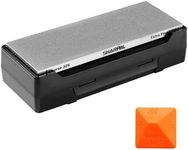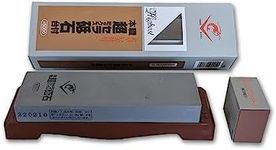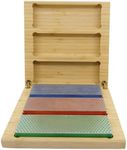Buying Guide for the Best Whetstones
Choosing the right whetstone is essential for maintaining the sharpness and longevity of your knives and tools. A whetstone, also known as a sharpening stone, is used to grind and hone the edges of steel tools and implements. The key to selecting the best whetstone for your needs lies in understanding the different specifications and how they align with your sharpening requirements. Here are the key specs to consider when picking a whetstone.GritGrit refers to the coarseness of the whetstone and is crucial for determining the level of sharpness you can achieve. Whetstones come in various grit levels, typically ranging from coarse (around 200-400 grit) to fine (up to 8000 grit). Coarse grit stones are used for repairing damaged edges and reshaping blades, while medium grit stones (1000-3000 grit) are ideal for regular sharpening. Fine grit stones (4000-8000 grit) are used for polishing and achieving a razor-sharp edge. Choose a grit level based on the condition of your knives and the sharpness you desire.
MaterialWhetstones can be made from different materials, including natural stones, synthetic stones, and diamond stones. Natural stones, such as Arkansas stones, are known for their durability and consistent sharpening quality. Synthetic stones, like ceramic and water stones, are popular for their affordability and effectiveness. Diamond stones are the hardest and most durable, providing fast sharpening but can be more expensive. Consider the material based on your sharpening frequency and the type of knives you own.
SizeThe size of the whetstone is important for ease of use and efficiency. Larger stones provide a bigger surface area, making it easier to sharpen larger knives and tools. Smaller stones are more portable and can be convenient for quick touch-ups. If you frequently sharpen large kitchen knives or tools, opt for a larger whetstone. For occasional sharpening or travel, a smaller stone may be sufficient.
TypeThere are different types of whetstones, including water stones, oil stones, and diamond stones. Water stones require soaking in water before use and are known for their fast sharpening capabilities. Oil stones need to be lubricated with oil and offer a slower but more controlled sharpening process. Diamond stones can be used dry or with water and provide quick sharpening. Choose the type based on your preference for maintenance and sharpening speed.
Combination StonesCombination stones feature two different grit levels on each side, offering versatility and convenience. These stones allow you to perform both coarse sharpening and fine polishing with a single tool. If you want an all-in-one solution for various sharpening needs, a combination stone can be a great choice. Ensure the grit levels on the combination stone match your sharpening requirements.

